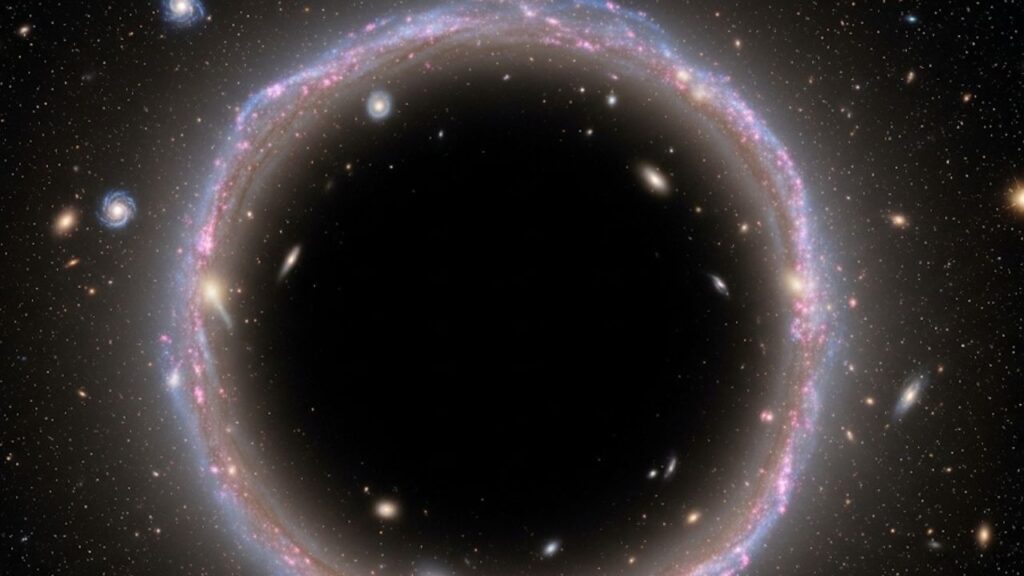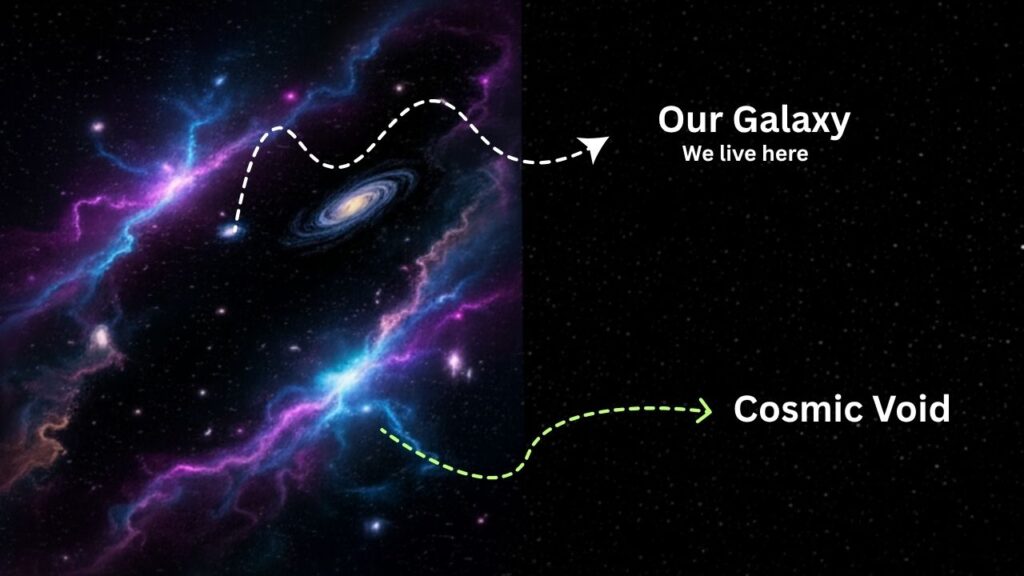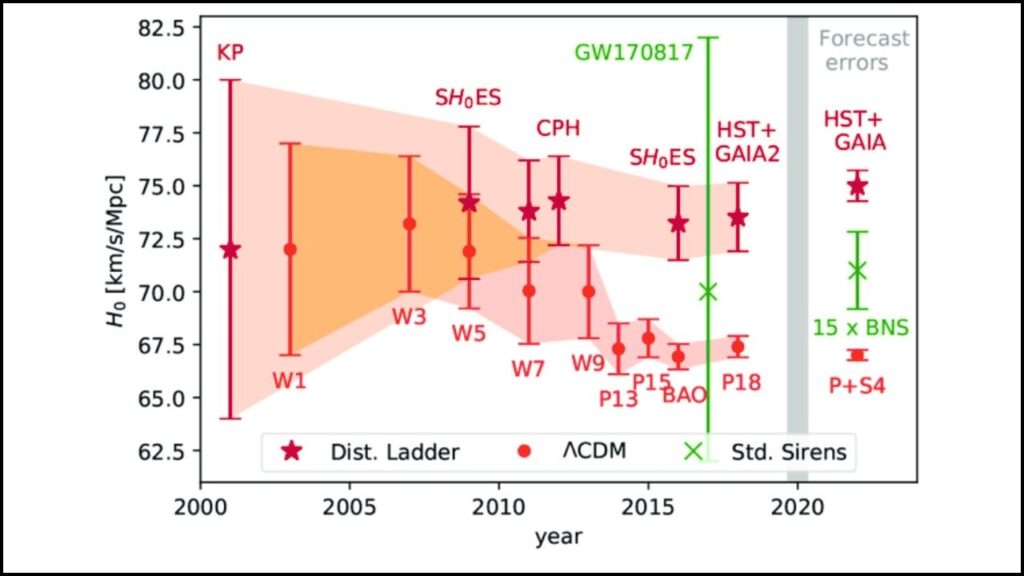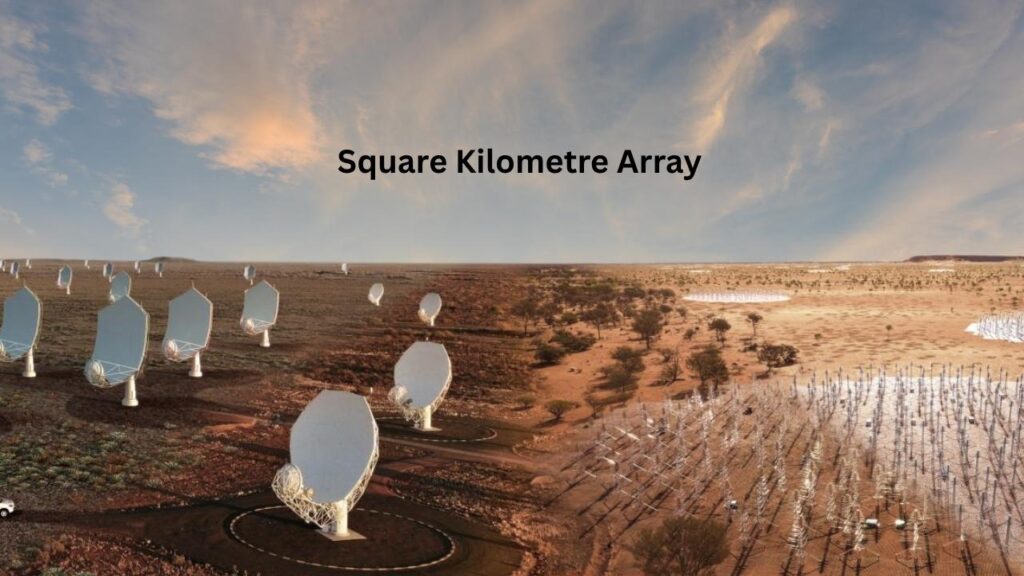The universe is vast, mysterious, and full of surprises. Recently, astronomers and cosmologists have been buzzing with excitement over a remarkable discovery: scientists have detected a giant void in the universe—an enormous region with far less matter than average, possibly surrounding our own Milky Way galaxy. This finding could be the missing piece in solving one of the most persistent puzzles in modern astronomy: the so-called “Hubble tension,” or the mismatch in how fast the universe appears to be expanding.

But what does it mean to live in a cosmic void? How could this discovery reshape our understanding of the Big Bang and the evolution of the cosmos? Let’s break down the science, the implications, and the fascinating journey that led to this revelation.
Scientists Detect Giant Void in the Universe
| Topic | Details |
|---|---|
| Discovery | Evidence suggests Earth and the Milky Way may be inside a giant cosmic void, over 1 billion light-years across. |
| Significance | Offers a possible solution to the Hubble tension—the mismatch in the universe’s measured expansion rate. |
| Void Size | The KBC void is estimated to be more than a billion light-years wide, much larger than typical voids. |
| Observational Advances | New surveys (DESI, Euclid, SKA) and advanced data analysis are revolutionizing void studies. |
| Key Data | Local expansion rate (Hubble’s constant) is about 10% higher than predicted by early-universe measurements. |
| Professional Impact | May reshape cosmological models and our understanding of dark energy and cosmic structure. |
| Official Source | NASA: Cosmic Voids |
The idea that scientists have detected a giant void in the universe—and that we may be living inside it—is more than just a cosmic curiosity. It could be the key to solving the Hubble tension, one of astronomy’s most stubborn mysteries. As new data pours in from cutting-edge surveys and telescopes, we may soon have a clearer picture of our place in the universe—and a better understanding of how the cosmos really works.
What Is a Cosmic Void?
A cosmic void is a gigantic, mostly empty region of space, containing far fewer galaxies, stars, and matter than the cosmic average. If you imagine the universe as a giant sponge, the filaments and clusters of galaxies are the “solid” parts, while the voids are the “holes”—enormous, but nearly empty.

- Typical voids are hundreds of millions of light-years across.
- The newly discussed void, called the KBC void, may be more than a billion light-years wide and is unusually empty of both normal and dark matter.
These voids are not completely empty; they contain some galaxies, gas, and dark matter, but at much lower densities than the cosmic average.
How Was the Giant Void Detected?
Mapping the Universe
Astronomers use massive surveys and telescopes to map the positions and distances of millions of galaxies. By analyzing these maps, they can spot regions where galaxies are sparse—potential voids.
- Galaxy surveys like the Sloan Digital Sky Survey (SDSS), the Dark Energy Survey (DES), and the Dark Energy Spectroscopic Instrument (DESI) have provided detailed 3D maps of the universe.
- Redshift measurements allow scientists to determine how far away galaxies are and how fast they’re moving.
Clues from the Cosmic Microwave Background
The cosmic microwave background (CMB) is the faint afterglow left over from the Big Bang. When this ancient light passes through a void, it can be slightly cooled—a phenomenon known as the Integrated Sachs-Wolfe effect. Astronomers have detected such “cold spots” in the CMB, which may be linked to large voids.
Analyzing Local Galaxy Density
By counting the number of galaxies in various regions, scientists noticed that the density of galaxies in our cosmic neighborhood is significantly lower than average. This underdensity is consistent with the presence of a giant void.
Advanced Data Analysis
Sophisticated algorithms and machine learning techniques help astronomers identify voids and analyze their properties. These tools can distinguish between normal cosmic variations and truly exceptional structures like the KBC void.
Why Does This Matter? The Hubble Tension Explained

One of the most intriguing mysteries in cosmology is the Hubble tension. This refers to the persistent disagreement between two methods of measuring the universe’s expansion rate, known as the Hubble constant:
- Local measurements (using nearby supernovae and Cepheid variable stars) suggest a faster expansion rate.
- Early universe measurements (using the CMB) suggest a slower expansion rate.
The difference is about 10%—small, but significant enough to challenge our understanding of the cosmos.
The Void Hypothesis
If we live inside a giant void, it could help explain this discrepancy:
- Galaxies inside a void move away from each other faster than they would in a denser region, due to the lower gravitational pull.
- This creates the illusion of a higher local expansion rate, even if the universe as a whole is expanding at the rate predicted by the standard model.
This idea doesn’t require changing the fundamental laws of physics—it simply means that our cosmic address may be more unusual than we thought.
The KBC Void: A Closer Look
The KBC void is named after the researchers who first proposed it. It is estimated to be:
- Over 1 billion light-years across
- About 20% less dense than the cosmic average
- Centered near the Milky Way, but not perfectly aligned
This makes it one of the largest known voids in the universe—much bigger than famous voids like the Boötes Void.
How Unusual Is This?
While voids are a normal part of the cosmic web, the KBC void’s size and depth are exceptional. Most cosmological models predict that voids of this scale should be extremely rare, but not impossible.
How Do Scientists Study Voids?
Step 1: Mapping and Surveying
- Large-scale surveys like DESI and Euclid map millions of galaxies in 3D, revealing the structure of the cosmic web.
- Radio telescopes like the Square Kilometre Array (SKA) are helping to find faint galaxies within voids.

Step 2: Identifying Voids
- Void-finder algorithms scan galaxy maps for regions of low density.
- These algorithms measure the size, shape, and depth of each void.
Step 3: Measuring Effects
- Redshift patterns: Galaxies inside voids may have slightly different redshifts due to local expansion.
- CMB analysis: Scientists look for cold spots in the CMB that align with known voids.
- Gravitational lensing: The lack of mass in voids affects how light from distant galaxies is bent.
Step 4: Comparing with Models
- Scientists use simulations to predict how voids should affect cosmic expansion.
- They compare these predictions with real data to test the void hypothesis.
Real-World Examples: Other Known Voids
- Boötes Void: About 330 million light-years across, one of the largest previously known.
- Eridanus Supervoid: Associated with a cold spot in the CMB, nearly a billion light-years wide.
- KBC Void: The focus of current research, potentially the largest and most influential for our measurements.
Implications for Cosmology
If the giant void hypothesis is correct, it could have profound effects on our understanding of the universe:
- Refining the Standard Model: The standard cosmological model assumes the universe is uniform on large scales. A giant void challenges this assumption.
- Dark Energy: Some researchers suggest that the apparent acceleration of the universe’s expansion (attributed to dark energy) might be partly explained by our position inside a void.
- Cosmic Structure Formation: Understanding how such a large void formed could shed light on the processes that shaped the early universe.
What Does This Mean for the Big Bang Theory?
The discovery of a giant void does not contradict the Big Bang theory. Instead, it adds nuance to our understanding of how matter was distributed after the Big Bang and how structures like galaxies and voids formed over billions of years.
- The Big Bang theory remains the best explanation for the origin and evolution of the universe.
- The presence of a giant void may help explain certain measurements without requiring new physics.
Quantum Sensing: NASA Demonstrates Ultracold Quantum Sensor in Space
NASA’s SPHEREx Telescope Launches to Explore Universe’s Origins
Photonics in Space: How NASA Is Using Laser Communication to Boost Deep-Space Data Transfer
FAQs About Scientists Detect Giant Void in the Universe
What is the Hubble tension?
The Hubble tension is the mismatch between the universe’s expansion rate as measured locally (using nearby galaxies) and as predicted from the early universe (using the CMB). The local rate is about 10% higher.
How big is the void we might be living in?
Estimates suggest the KBC void could be over 1 billion light-years across, making it one of the largest voids ever detected.
Does this mean the Big Bang theory is wrong?
No. The Big Bang theory still explains the universe’s origin. The void discovery may help explain certain observations without changing the theory itself.
How do scientists know the void exists?
Through galaxy surveys, CMB analysis, and advanced data modeling, scientists have found evidence of a large underdensity around our galaxy.
What are the next steps in this research?
Ongoing and future surveys (like DESI, Euclid, and SKA) will provide more data to confirm or refute the void hypothesis and refine our understanding of cosmic structure.
The Future of Void Research
The discovery of a possible giant void is just the beginning. As technology advances, astronomers will:
- Map the universe in greater detail
- Measure the properties of voids more precisely
- Test whether voids alone can explain the Hubble tension
- Explore how voids affect galaxy formation and cosmic evolution
This research could lead to a deeper, more accurate understanding of our universe—and maybe even new discoveries that challenge what we think we know.






